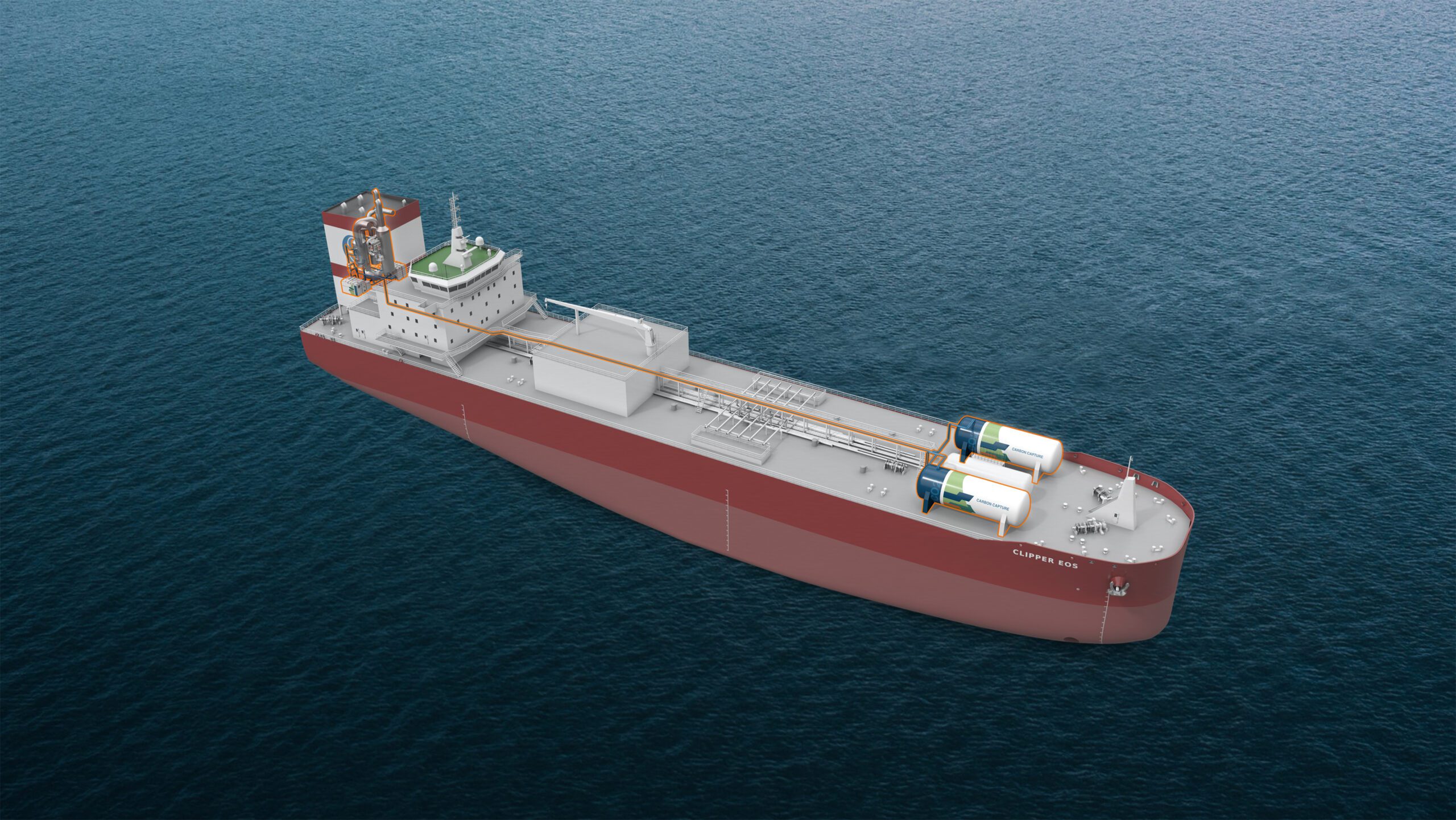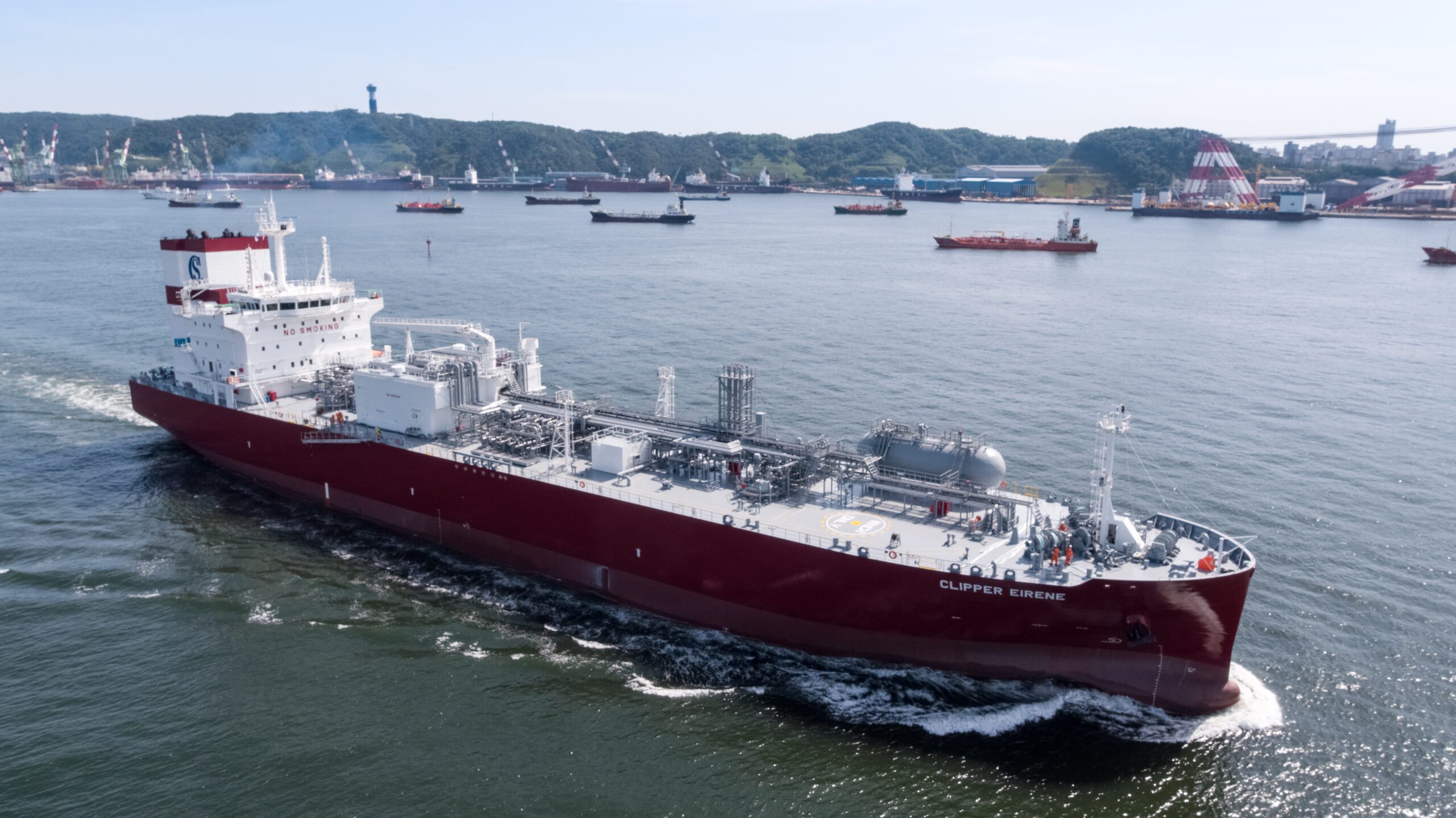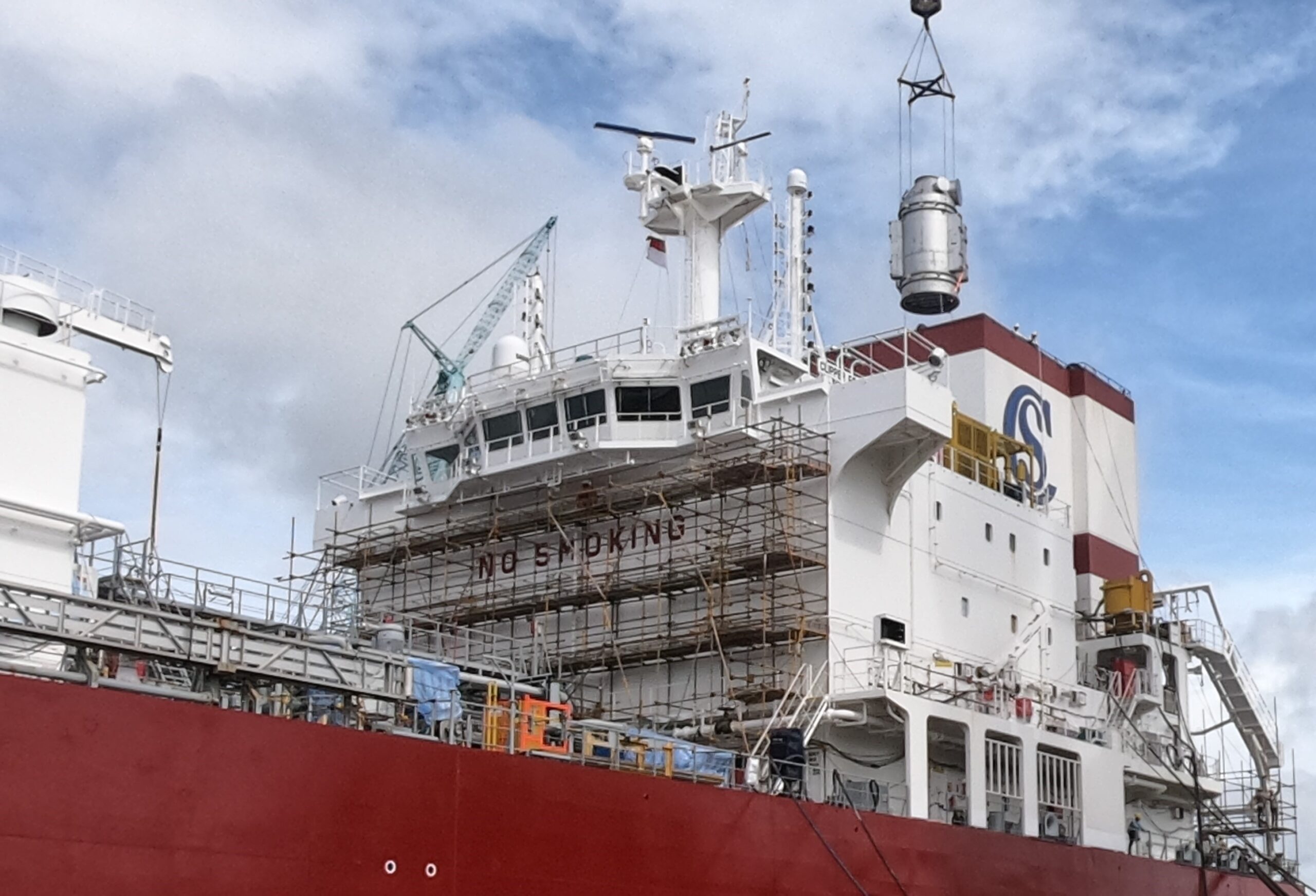Solvang signs deal to decarbonise fleet
As a pioneer in international shipping, Solvang signs a LOI with Wärtsilä to test full-scale Carbon Capture and Storage (CCS) for maritime use. The long-term aim is to achieve a zero-emission deep-sea fleet.

Over the last couple of decades, Solvang has worked with Sintef/NTNU, engine makers, shipyards and equipment producers to reduce greenhouse gas emissions. By means of SOx scrubbers and low-pressure exhaust gas recirculation units, all harmful emissions have been reduced significantly, and now Solvang makes further steps to decarbonise the vessels.
As a next step, Solvang now signs a letter of intent with Exhaust Gas Cleaning producer Wärtsilä to test Carbon Capture and Storage (CCS) for shipboard installation. Although the technology has been proven on land, there is no clear technology roadmap for how to achieve the required emission reductions in the shipping industry. Wärtsilä is therefore installing a CCS system in its research centre in Moss, to test and develop the technology in a ship-like environment. After this, they will install a full-scale CCS system on one of Solvang’s 2019 built ethylene carriers, the “Clipper Eos”.
The “Clipper Eos” has been time chartered by Marubeni Corp. Tokyo, since her delivery from the shipyard in 2019. Marubeni, having more than 40 years experience trading and handling ethylene, advise that they are committed to cooperating with Solvang and Wärtsilä to enable the parties to perform relevant testing and installation of equipment on the vessel in a mutual effort to drastically reduce the CO2 footprint of the vessel.
Liquefied CO2 in deck tanks
Maritime CCS can be described as the process of capturing carbon dioxide (CO2) from main engine combustion before it is released to air through the exhaust outlets. By applying carbon separation in the chimney, the resulting liquid CO2 is then transferred to deck tanks, ready to be processed for re-use in industry (e.g. to produce synthetic fuel), or millennia-long storage. What could be described as a simple setup, nevertheless, requires extensive research and needs to be adapted for marine use.
The Solvang/Wärtsilä scope includes steps such as modifying existing exhaust gas cleaning technology with particle filters, installing a carbon absorber and stripper units, as well as modifying liquefaction systems to cater for deck tanks.
Heavy fuel oil made green
As Solvang´s vessels use residual fuel or heavy fuel oil (HFO) for propulsion, the fleet represents most of the world´s deep-sea transport. Since 2011, Solvang and Wärtsilä have made consistent joint efforts to modify HFO into a non-polluting fuel. They have introduced SOx scrubbers to convert sulphur into sea salt and remove most particles, as well as launching low-pressure exhaust gas recirculation (LP-EGR) to “re-burn” exhaust and thereby reduce NOx emissions. Together, the technologies have cleaned the exhaust from HFO so much that Solvang´s vessels can operate within Tier III emission sectors (the strictest environmental requirements) without any after treatment of the exhaust (SCR catalyst). By September 2021, two engine families installed on five Solvang vessels have reached formal Tier III NOx emission compliance.
If Solvang succeeds in creating a CCS solution that is both practical, cost-efficient and takes into account the overall environmental impact in terms of emissions and energy demand, a milestone in green shipping has been reached.
Clipper Eirene/Eos
The Clipper Eirene is Clipper Eos' sister ship. This is the vessel class that will be used for test full-scale Carbon Capture and Storage (CCS) for maritime use.
FACTS: Carbon Capture and Storage joint venture
Parties: Solvang ASA and Wartsila Norway AS, with support from Marubeni Corp. as vessel Charterer.
Goals:
To demonstrate that CO2 can be captured and stored as liquid CO2 in the deck tank
Gain real experience of operation of an onboard CCS plant;
- Energy consumption
- Cost (CAPEX and OPEX)
- Maintenance requirements
Find possible receivers of the captured CO2
Scope:
- Modifying the existing EGC installation to incorporate a particle-filter (WESP), during Q2 2022
- Testing of WESP unit
- Installing CO2 absorber and stripper units and associated peripherals by 2023
- Modifying the existing Liquefaction system and deck tank to accommodate liquefaction and storage of CO2
- Testing of the CCS system to optimise the operation and gain operational experience
- Provide input to regulators for development of a coherent and practical set of rules for CCS on ships.

